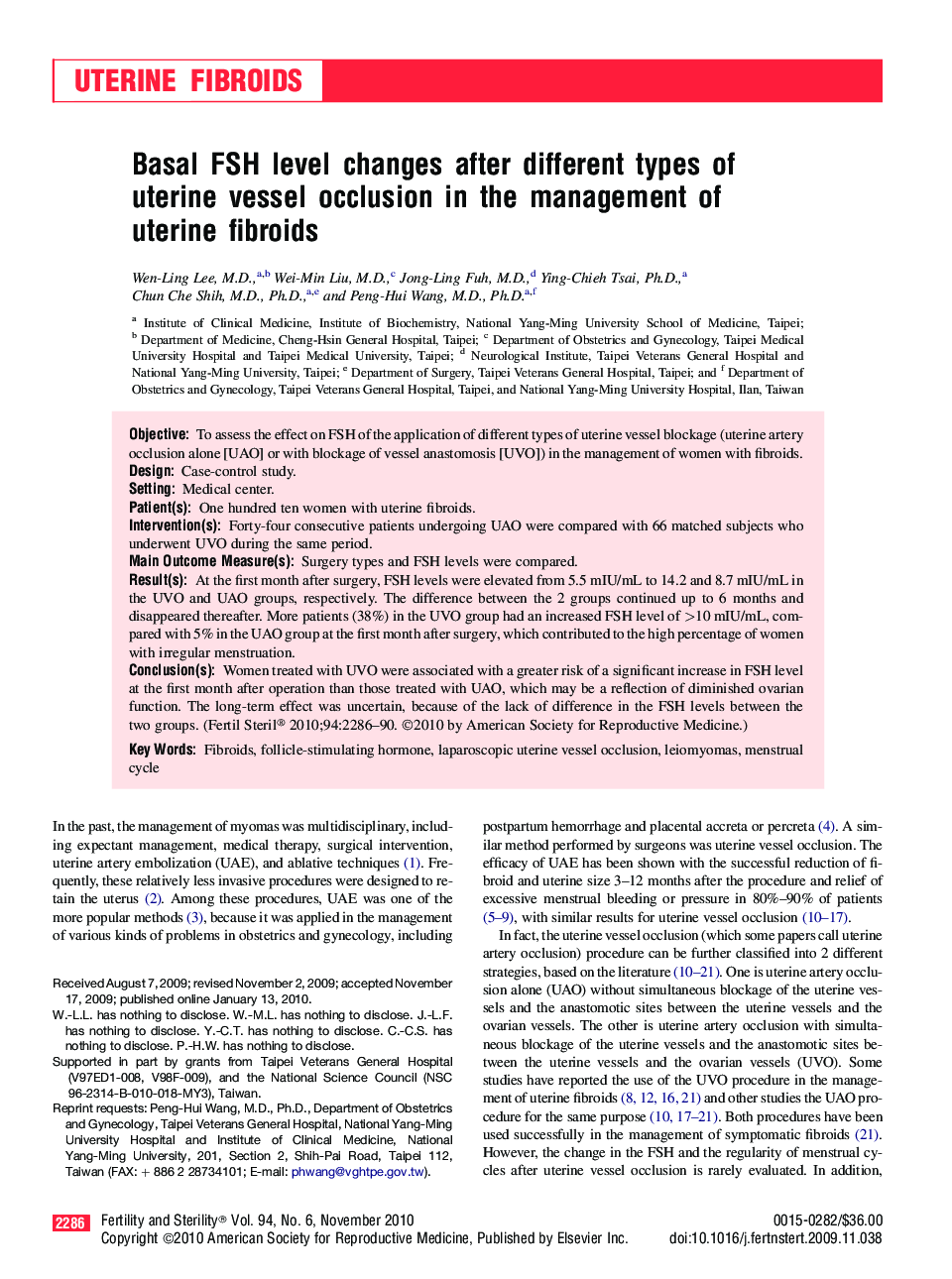| Article ID | Journal | Published Year | Pages | File Type |
|---|---|---|---|---|
| 3932863 | Fertility and Sterility | 2010 | 5 Pages |
ObjectiveTo assess the effect on FSH of the application of different types of uterine vessel blockage (uterine artery occlusion alone [UAO] or with blockage of vessel anastomosis [UVO]) in the management of women with fibroids.DesignCase-control study.SettingMedical center.Patient(s)One hundred ten women with uterine fibroids.Intervention(s)Forty-four consecutive patients undergoing UAO were compared with 66 matched subjects who underwent UVO during the same period.Main Outcome Measure(s)Surgery types and FSH levels were compared.Result(s)At the first month after surgery, FSH levels were elevated from 5.5 mIU/mL to 14.2 and 8.7 mIU/mL in the UVO and UAO groups, respectively. The difference between the 2 groups continued up to 6 months and disappeared thereafter. More patients (38%) in the UVO group had an increased FSH level of >10 mIU/mL, compared with 5% in the UAO group at the first month after surgery, which contributed to the high percentage of women with irregular menstruation.Conclusion(s)Women treated with UVO were associated with a greater risk of a significant increase in FSH level at the first month after operation than those treated with UAO, which may be a reflection of diminished ovarian function. The long-term effect was uncertain, because of the lack of difference in the FSH levels between the two groups.
